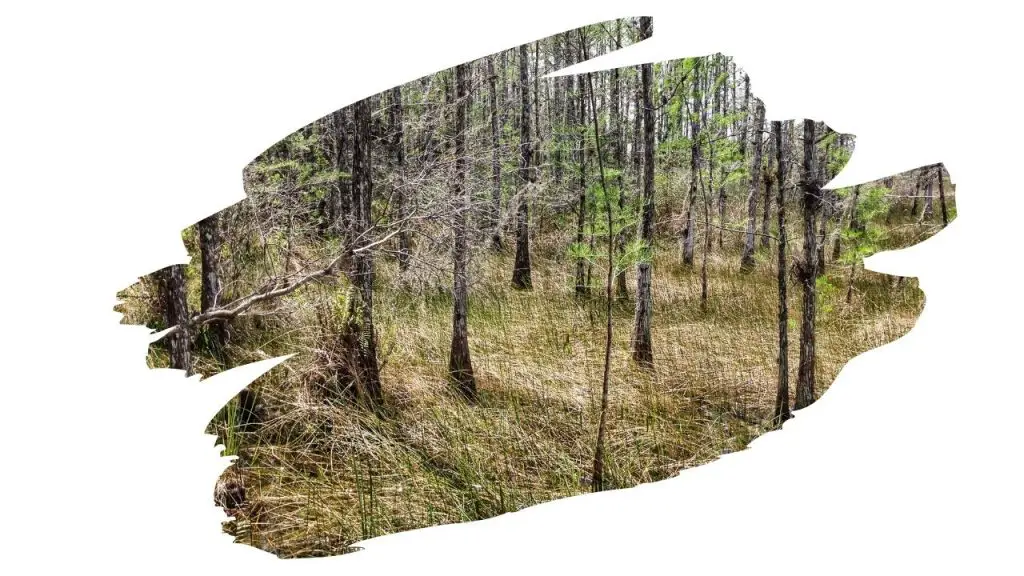Cypress wood is a bit of a maverick. That’s because this honey-hued lumber is well suited to the great outdoors, all thanks to its extraordinary level of water-resistance.
And cypress woods natural water-resistance is down to a little preservative called Cypressene. Produced inside the heartwood of cypress trees, this oil like substance works to prevent cypress wood from decomposing.
And this oil works like any oil does in that it seeps into (and throughout) the wood. And as it does, cypressene protects Cypress wood from rot, mildew and insects.
So, when it comes to pressure treatment, does cypress wood even need it?
You see, when wood is pressure treated, it goes through a process whereby chemical preservatives are forced into the wood.
These man-made chemical preservatives protect wood exactly the same way that cypressene naturally does; they make wood much more rot-resistant.
And if that’s the case, does cypress wood even need to be pressure treated?
Cypress trees produce a natural rot-resisting substance called Cypressene. So, cypress wood doesn’t need to be put through a pressure treatment process.
Still, while that’s all well and good, water-resistance is not equal to water-proofing.
And while pressure treatment may not be necessary, can cypress wood also get away without sealant as well? Let’s get into it…

This post may contain affiliate links to products that we receive a commission for (at no additional cost to you). Learn more here.
No 1.) Is Cypress Wood Actually Water Resistant?
Water resistant, rot resistant, mildew resistant… it does it all!
So, yes, cypress wood is very water resistant. Which means it doesn’t suffer from warping and bowing problems the way other wood does.
Which is one of the reasons why this durable coniferous tree is a popular source of lumber for building and construction work.
Related Post: Is There A Type Of Plywood That Doesn’t Warp? (Solved!)
No 2.) How Long Does Cypress Wood Last Outside?
When used in above-ground building work, (such as roofing and siding), this timber-type can last up to 40 long years.
When used on in-ground construction work, (like foundations), it can still last a good while, typically around 25 years.
How Long Does Cypress Last In The Ground? When in ground, properly sealed cypress wood can last up to 25 years.
No 3.) Should Cypress Wood Be Treated At All?
This particular lumber, unlike pine or cedar, does not require chemical preservative treatment. It produces its own preservative naturally, which builds up over time inside the heartwood of the tree.
This oily preservative is the secret ingredient that makes this wood type so weatherproof (and perfect for outdoor construction).
Related Post: Is Cypress Wood Really That Good For Outdoor Furniture?
No 4.) But, Can You Pressure Treat Cypress Anyway?
You can pressure treat cypress, but it would be a waste of time. Cypress wood already has oil preservatives in it doing the work that a chemical preservative will.
Adding chemical preservatives via treatment won’t result in cypress wood being somehow ‘extra’ treated. It’ll just end up being a pointless process.
Related Post: How To Dry Pressure Treated Wood (Quickly And Without Warping)
No 5.) Does Cypress Need To Be Finished?
Cypress wood will always need to be sealed and finished if it is to be used to build anything outside.
This is because cypress wood isn’t water-tight. It may have very small wood pores, but it has pores all the same.
And if you leave its wood pores unsealed, then cypress wood will take on too much moisture (despite the best efforts of its oily preservative).
So To Sum It All Up…
Cypress wood is a durable type of wood that doesn’t require chemical treatments. It can last the test of time without the addition of chemical preservatives and the like.
However, while it may be water resistant, it is not water proof. So it will still need to be finished and thoroughly sealed if it is going to be spending any amount of time outdoors.
References
Baldcypress and pondcypress: an annotated bibliography, 1890-1995 (lsu.edu)



